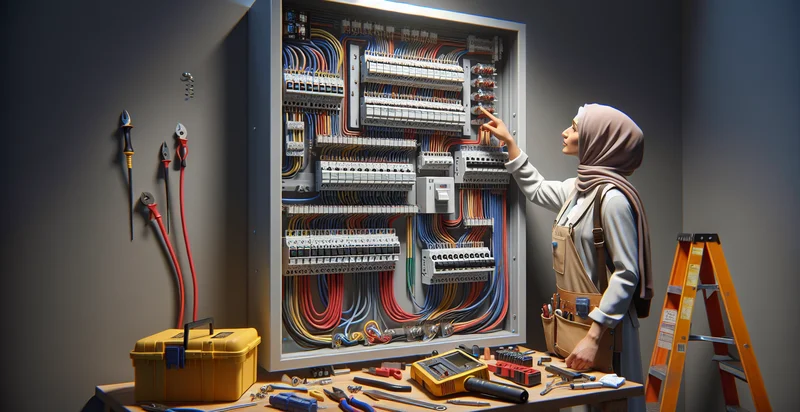Identify if electrical is up to code
using AI
Below is a free classifier to identify if electrical is up to code. Just upload your image, and our AI will predict if electrical systems are up to code - in just seconds.

Contact us for API access
Or, use Nyckel to build highly-accurate custom classifiers in just minutes. No PhD required.
Get started
import nyckel
credentials = nyckel.Credentials("YOUR_CLIENT_ID", "YOUR_CLIENT_SECRET")
nyckel.invoke("if-electrical-is-up-to-code", "your_image_url", credentials)
fetch('https://www.nyckel.com/v1/functions/if-electrical-is-up-to-code/invoke', {
method: 'POST',
headers: {
'Authorization': 'Bearer ' + 'YOUR_BEARER_TOKEN',
'Content-Type': 'application/json',
},
body: JSON.stringify(
{"data": "your_image_url"}
)
})
.then(response => response.json())
.then(data => console.log(data));
curl -X POST \
-H "Content-Type: application/json" \
-H "Authorization: Bearer YOUR_BEARER_TOKEN" \
-d '{"data": "your_image_url"}' \
https://www.nyckel.com/v1/functions/if-electrical-is-up-to-code/invoke
How this classifier works
To start, upload your image. Our AI tool will then predict if electrical systems are up to code.
This pretrained image model uses a Nyckel-created dataset and has 2 labels, including Outdated and Up To Code.
We'll also show a confidence score (the higher the number, the more confident the AI model is around if electrical systems are up to code).
Whether you're just curious or building if electrical is up to code detection into your application, we hope our classifier proves helpful.
Related Classifiers
Need to identify if electrical is up to code at scale?
Get API or Zapier access to this classifier for free. It's perfect for:
- Residential Safety Inspections: Home inspectors can utilize the 'if electrical is up to code' identifier to assess residential properties before sale or occupancy. This ensures that all electrical installations comply with local safety codes, helping to protect homeowners from electrical hazards.
- Insurance Risk Assessment: Insurance companies can implement this classification function to evaluate the risk associated with electrical systems in homes and businesses. By determining if the electrical setups are code-compliant, insurers can accurately adjust premiums and reduce liability risks.
- Construction Site Compliance Checking: Contractors can leverage this tool to verify that new electrical installations adhere to building codes during construction. This facilitates timely identification of non-compliance issues, ensuring that corrective actions can be taken before project completion.
- Remote Property Management: Property managers can use the identifier to remotely check the compliance status of electrical systems in multiple properties. This capability streamlines maintenance schedules and minimizes emergency repairs by ensuring all electrical systems are regularly reviewed.
- Code Violation Reporting: Local governments can utilize this function to automate the detection of code violations in an area. By identifying non-compliant electrical installations, officials can prioritize inspections and enforce regulations more effectively.
- Training and Compliance Education: Electrical training programs can incorporate this identification tool as part of their curriculum to teach students about code compliance. By simulating real-world scenarios, students can gain hands-on experience in recognizing and rectifying code violations.
- Environmental Sustainability Audits: Organizations focused on sustainability can use this classification to identify outdated electrical systems in their facilities. Ensuring electrical compliance contributes to reducing energy waste and improving overall efficiency, aligning with eco-friendly initiatives.


